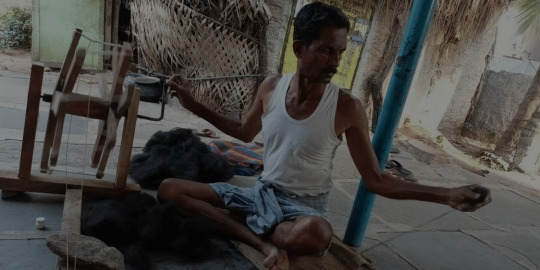Don't wanna be here? Send us removal request.
Text
Everything You Need know About Ghongadi

These Ghongadi blanket, which is a symbol of the cultural and religious glory of Maharashtra, has a place in the Deoghar and earlier the late actor Dada Kondke had outlined the importance of the blanket in the social life of the time in the film song "Kathi no Ghongdan Ghevu Diya Kiran Mala B Jatra Yevu Diya Ki". The heat is disappearing. Kaalbhor blanket, which everyone wants, i On the shoulders of Panduranga of Pandhari, on the shoulders of Lord Krishna, on the shoulders of Dattaprabhu, on the shoulders of Navnath, on the shoulders of Khandoba, Kheloba, Biroba, Siddhanath, Mahalingaraya, Vitthal Birdeva, there are also blankets on the shoulders of two reghi, two and a half reghi, three reghi, three and a half reghi in the Gurushishya tradition of Dhangar tribe. It is found that the most sacred place is the blanket and the natural identity of the Dhangar tribe is created from the blanket.s famous as Kambli, Kambla, and the flag of this Kambli is used in the Dhangar community. Blanket expert Sachin Shelke has informed that the history of blanket making is ancient and there is a reference to this blanket from Mahabharata. Those who know about blankets always use blankets but some people buy blankets thinking of using blankets for different reasons. Blankets are made from two colors of wool, black and white, and blankets are graded and khali blankets are used for sleeping. The shepherds who keep the wild sheep in the Yakho always use blankets to protect them from the wind and rain. As natural heat is available in everyone's house.
Jawal blanket:-
The wool obtained from the first shearing of a sheep lamb is called Jawal. The blankets made from this Jawal are called Jawal blankets. There are two or three types of Jawal blankets. The most finely woven blanket is soft and does not pierce the body. The cost is higher as more effort is required. Similarly, blankets are made from medium and thick wool yarn. These three types of blankets are used by people to cover themselves. At present, the work of making these blankets on handlooms is done in sporadic places in Mhaswad in Mandesh and Chitradurg in Karnataka, Konkan belt. Since Jawla wool is limited, blankets are also limited. Jawla blankets are expensive, so they are cheap, so don't be deceived by buying soft and cheap Panipat blankets under the name of Jawla. A traditional blanket of two and a half thousand can save you lakhs of rupees.
Khali Ghondi
A reduction in chinchocca fur while making blankets
The most widely used blanket made from chinchilla is called khali blanket. This blanket is hard like starch cloth. Khali blanket is made from black, white and black and white combined wool. This blanket is used for sleeping. This blanket is prepared by soaking in salt water.
Both the above types of blankets are made by weaving on handlooms in the traditional way.
Machine Made Blanket.
A blanket is made by making a yarn of woolen yarn and mixing it with other yarns. This blanket is heavy. People feel the problem of wool when using traditional blankets, so they use cheap machine made blankets available in the market. It contains 60% wool and 40% other yarns. This blanket is made of black or black. Dyes are given to make it white. Over time these blankets show their original form.
Panipat blanket
In many films and religious TV channels, Maharaja who narrates the story of Ramayana has a blanket on his shoulder. It is a soft blanket called Panipat Shawl. In Panipat in the state of Haryana, shawls that look exactly like blankets are produced on a large scale, and thousands of people mistake them for blankets and buy these shawls. A woolen blanket is coarse and soft as well as warm. The blanket is washable and does not get damaged by soil and mud. Using the blanket in any season provides physical benefits.
Mahatma Gandhi made khadi a nation by giving the slogan of Swadeshi, but no one tried to make the blanket made from woolen yarn on the khadi-making wheel itself. Mahatma Phule had a blanket on his shoulders while facing the Hunter Commission This blanket caught the attention of the British. Meanwhile, the handloom blankets produced in Belgaum were sent to Britain by the British. Even in the history of the Marathas, when going on big missions, everyone used to have a blanket, this blanket is disappearing during the mechanization period. As the blankets and the blanket weavers' hard work is not getting due respect, the blankets which represent the glory of Indian culture are getting stuck and there is a need to restore the glory of this blanket once again.
–By Ghongadi
1 note
·
View note